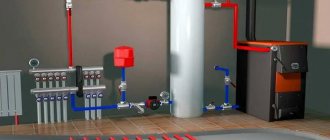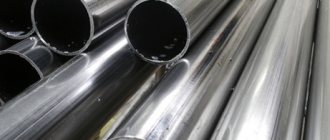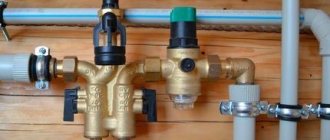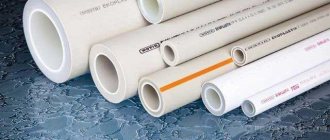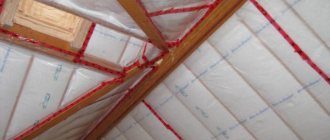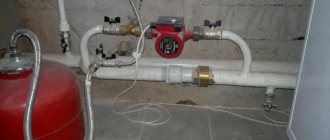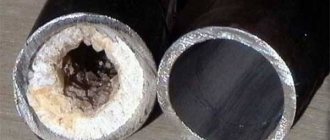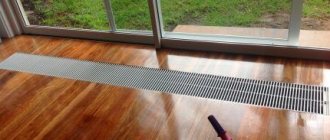With the development of technology, the attitude towards many construction works is radically changing. Installation of heating systems is no exception. Classic iron heating pipes are gradually giving way to more modern analogues. The most common replacement is polypropylene pipeline. Read on to learn how to select and install them.
Propylene pipes and fittings Source www.ket-kaluga.ru
General information about propylene pipeline
Quite a long time has passed since the use of polypropylene pipes for heating began for the experience of use to show that in the usual version they are not very suitable for these purposes. High temperature loads and pressure do their job, and the pipeline is subject to deformation.
As a result, propylene pipes, despite all their advantages, began to lose to classical metal in service life, although “de jure” manufacturers indicated completely different time frames for their products.
Engineers found a solution and began to use reinforcement when producing plastic pipes for heating. This made it possible to increase the service life of polypropylene pipes to 50 years, while maintaining all their advantages.
Large linear extension
If you are planning to use polypropylene pipes for heating, then immediately plan to use them only in hidden installation. You will need to hide all pipes in the walls and screed, and preferably in insulation.
The main problem with polypropylene is its linear expansion. It is approximately 2.5 mm per linear meter. If you have installed straight pipes, then during operation they will definitely “float” somewhere. Even if you fasten them often. If these pipes are located outside, then you are unlikely to appreciate such a picture.
Types of reinforcement
Several different reinforcement options are used, but according to the most popular solutions, most often a polypropylene heating pipe is reinforced with aluminum or fiberglass.
In the first option, the reinforcing material is aluminum foil. Its location may vary. Two technologies are used - with a surface arrangement and between the layers of the main body of the pipe. The foil gives the product the necessary rigidity and protects it from critical expansion.
Pipe with aluminum reinforcement Source thermohit.ru
The second option is considered more reliable, since propylene is reliably welded to fiberglass and does not allow the product to delaminate. Such pipes are stronger than those reinforced with foil.
In addition, when reinforced with aluminum, the complexity of welding increases, since in order to prevent delamination of the pipe body during its installation and further use, careful cleaning of the ends is required. Fiberglass does not have this disadvantage and such products are much easier to weld. They do not need any preparatory work.
When purchasing polypropylene for heating, it is advisable to give preference only to well-established manufacturers and intermediaries. This will allow you to purchase quality products and avoid counterfeit goods.
Despite the constant improvement of technological processes in the production of propylene pipes, it is not yet possible to completely prevent deformation during use. Therefore, a clear solution has not yet been found which polypropylene pipes are better for heating a private house. In most cases, they are guided by their experience and available funds.
Pipes with glass fiber reinforcement Source prom.st
A large number of joints
Another disadvantage in organizing heating with polypropylene pipes is the large number of joints. The average house can sometimes have 200-300 joints and most of them are hidden in the screed and walls. And every junction is a human factor that can play a cruel joke. At any moment, any joint can leak. It's good if he's outside. But as practice shows, quite often the joint begins to leak inside.
And taking into account the constant linear expansion of the pipe, the joint may also lose its tightness. It would be correct to note that such situations do not always occur.
Characteristics
As for the technical indicators of propylene products, five main points can be distinguished:
- Pressure load resistance.
At this point, the most important factor is the temperature of the coolant. There is a direct relationship - with increasing temperature, the critical permissible pressure decreases. The vast majority of propylene pipes sold to consumers operate under a pressure of 4-6 MPa, while the circulating liquid can be heated no higher than 70 degrees. It is important to take these indicators into account when designing a heating system.
- Temperature stability.
Propylene, used in the production of products for heating systems, can withstand a short heating period of up to 95 degrees. Such indicators are not pumped into heating circuits. As for the softening threshold of propylene, it starts at 110-140 degrees. When the temperature increases to 140-170 degrees, propylene begins to melt. Considering these indicators, it becomes obvious that the use of products made from this material in heating systems is quite advisable.
Fittings and accessories for propylene pipes Source lammin.org
- Anti-corrosion properties.
In this quality it is difficult to argue with polypropylene. The material completely does not react to exposure to water. Since the surface of the pipe is smooth from the inside, this prevents the deposition of salt deposits, which are inevitable when the coolant is heated.
- Reduced thermal conductivity.
An important indicator that allows you to reduce heat loss from the coolant and prevent condensation from forming.
- Long operational period.
Most manufacturers guarantee the operation of their products for about 50 years. Compared to 20-30 years for iron pipes, this figure looks quite impressive. However, the time of use is influenced by many factors, ranging from pressure in the system circuits to temperature changes.
By and large, these pipes are worthy competitors to metal ones, and in some respects they are superior.
Properties of polypropylene
Polypropylene is a synthetic polymer product in the form of a white powder; a profile is made from it by melting or pressing. This is the hardest and most resistant type of plastic, not subject to corrosion.
The main physical properties of polypropylene are durability, reliability, wear resistance, and resistance to high temperatures. It is not susceptible to the action of chemicals, salts and alkaline solutions, so these substances in water are not dangerous for this pipeline.
Polypropylene products:
- weigh less than steel;
- do not emit substances harmful to health - suitable for installation in domestic premises;
- the inner surface is smooth, which does not allow scale deposits;
- the level of thermal conductivity is low;
- good sound insulation;
- high electrical insulation;
- heat capacity index 2.0 kJ/(kg.°C);
- permissible temperature level -15 - +120;
- density value – 0.92 kg/cm³.
Polypropylene softens at +140 degrees, and the melting point is +175 - this is the temperature of steam.
This factor makes a polypropylene pipeline suitable for cold or hot water supply (especially reinforced ones) , where the temperature of the coolant is kept at +95, but it cannot be used as a steam pipe.
When heated, polypropylene becomes soft, and after cooling, all its physical properties return to it, and it becomes hard again, so assembling a water main from these products is appropriate, and the process of connecting pipeline elements is quite simple. It is enough to heat its ends and join them; it is also possible to connect them with couplings.
The main disadvantage of polypropylene is its plasticity. When heated, the product softens and can be easily bent. But when such a profile is bent, the internal diameter decreases significantly and the throughput level decreases.
In addition, this material is afraid of light; the product may lose its shine, crack, or fade. To avoid this, various components are added to polypropylene.
It is worth noting that polypropylene does not tolerate frost well; it becomes brittle at temperatures ranging from minus 5 to 15 degrees. This material deficiency can also be eliminated by adding ethylene or ethylpropylene rubber.
The standard pressure indicator for polypropylene products is 30 kg per 1 cm2. But according to manufacturers’ recommendations, it should not exceed 10 kg.
Selection of pipes and propylene
Before purchasing propylene pipes, several factors are taken into account. First of all, you need to decide what pipe diameter is best to use for heating a private house. The cross-section directly depends on the pressure in the system circuits, and as it increases, the required diameter increases.
Fittings, taps and filters for propylene pipes Source lifetherm.com.tr
See also: Catalog of Russian-style house projects with a boiler room
Diameter
There are several main sizes of polypropylene heating pipes on the market:
- up to 16 millimeters - perfect for installing “warm floors”; adapters are used to circumvent the problem of low flexibility at small radii;
- from 20 to 25 millimeters - the most suitable solution for equipping a heating system in a house or apartment; pipes with a large cross-section are used for risers;
- from 25 to 32 millimeters - as a rule, used in heating systems of large houses;
- from 200 millimeters - such products are used to install heating systems for public facilities such as clinics, educational institutions, retail outlets and other facilities where there is often a significant flow of visitors.
Marking
When selecting polypropylene pipes for a heating system, the second significant factor that you need to focus on is labeling. Thanks to marking, it is possible to accurately determine the critical pressure and operating temperature of the product.
Markings on pipes Source is2.ecplaza.com
The most commonly used marking of polypropylene pipes used in heating communications fits into four points:
- "PN10". These products have relatively thin walls. For this reason, it is not advisable to include them in heating systems. Meanwhile, they are well suited for arranging “warm floors” and hot water supply. The pressure limit for them is 1 MPa. The nominal operating temperature is no more than 45 degrees.
- "PN16". This type of pipe can withstand higher pressure, up to 1.5 MPa. The maximum permissible temperature also increases - 60 degrees. The wall thickness of such pipes starts at 3.5 millimeters. All this suggests that they are applicable for organizing heating. Meanwhile, products with this marking are still quite sensitive to critical temperature jumps in the circuits, which can lead to their delamination, therefore, for a reliable heating system, it is necessary to use products with a different marking.
- "PN20". It is already permissible to include such products in heating systems. The main thing is to take into account the thickness of the walls; it should be around 16 millimeters. For PN20 pipes, the working pressure is 2 MPa, and the temperature is up to 80 degrees.
- "PN25". This mark indicates that the pipes operate under pressure up to 2.5 MPa. They are produced only in a reinforced version. Accordingly, it follows that for the installation of a heating system, they are the most suitable solution.
How to read markings on pipes Source build-experts.ru
Taking into account all the above characteristics, components for installing heating communications are also selected. It is worth emphasizing that the calculation and installation of heating communications for an apartment and a house have certain differences. Below we will consider in detail how heating based on propylene pipes is organized in various residential buildings.
See also: Catalog of companies that specialize in installation of utilities and autonomous gasification
What diameters should I connect?
We need to ensure the supply of the required thermal power, which will directly depend on the amount of coolant supplied, but the fluid speed must remain within the specified limits of 0.3 - 0.7 m/s
Then the following correspondence of connections arises (for polypropylene pipes the outer diameter is indicated):
- 16 mm - for connecting one or two radiators;
- 20 mm – for connecting one radiator or a small group of radiators (radiators of “regular” power within 1 - 2 kW, maximum connected power - up to 7 kW, number of radiators up to 5 pcs.);
- 25 mm – for connecting a group of radiators (usually up to 8 pieces, power up to 11 kW) of one wing (arm of a dead-end wiring diagram);
- 32 mm – for connecting one floor or an entire house, depending on the thermal power (usually up to 12 radiators, respectively, thermal power up to 19 kW);
- 40 mm - for the main line of one house, if any (20 radiators - up to 30 kW).
Let us consider the choice of pipe diameter in more detail, based on pre-calculated tabular correspondences of energy, speed and diameter.
Replacing old pipes
Taking into account the fact that we have quite a lot of housing built in the last century, the issue of replacing dilapidated communications is very relevant. Last but not least, this applies to heating systems. It is highly desirable that such work be carried out by qualified specialists. This will allow you to make correct calculations and perform installation correctly.
Even just when replacing old pipes, it is advisable to at least “with one eye” evaluate the heating scheme, because who knows how conscientiously the calculations were carried out two or three decades ago, especially taking into account the materials that were in use at that time.
Generally speaking, room heating can be organized using a one-pipe or two-pipe scheme. The type of heating system directly determines the complexity of installation work, cost, number of consumable components and quality of heating.
Propylene pipes and an old-style radiator Source aqua-gel.ru
In most cases, two-pipe circuits require the installation of more radiators. The optimal diameter of heating pipes in such systems is considered to be 32 millimeters. Of course, a single-pipe heating system is more economical in terms of costs. However, it must be taken into account that in such systems the liquid temperature, as a rule, decreases with each subsequent radiator. To level out this drawback, radiators have to be equipped with thermostats.
Modern radiators are much lighter and more elegant compared to their older cast iron counterparts; they also require the installation of a Mayevsky crane. It is necessary to bleed air during the start of the heating season. This requirement applies to both single-pipe and two-pipe heating systems.
In addition to the pipes themselves, many auxiliary accessories are used during installation:
- plugs;
- couplings;
- adapters;
- tees;
- fitting;
- clamps and others.
These and other necessary elements are selected in accordance with the type of communications and the diameter of the installed pipes.
Propylene pipes and a modern radiator Source www.daynews.com.ua
When deciding which pipes are best for heating, one should not forget that the welding speed depends on the diameter of the product. To connect propylene structures, a special apparatus is used, which craftsmen call an “iron”. To heat up and connect products with a diameter of about 25 millimeters, about 7 seconds are enough. Accordingly, pipes with a larger cross-section will require longer heating and installation.
It is advisable to consider the general procedure for installing a heating system for an apartment - as the most complete. It consists of the following steps:
- The first step is approval and obtaining permission for the upcoming work in the responsible utility organizations. This is required to quickly shut off the water supply. This may also be true for a private house if it is connected to central heating.
- When completely replacing the riser, it is necessary to coordinate these actions with the neighbors living above or below. Since not all people are eager to let strangers into their homes, completely replacing the riser will probably be impossible. In such cases, they resort to special adapters, through which it is possible to connect metal pipes and propylene.
- After all approvals, work is carried out to dismantle the outdated heating system. In this case, especially in older buildings, extreme caution will need to be taken. Over time, cast iron pipes begin to “crumble” at the slightest touch. This often leads to clogging of communications with fragments of the old pipe.
Warm floor made of polypropylene pipes Source otoplenieblog.ru
Final conclusions
There is no clear answer to the question of what is better to use for heating – polypropylene or metal-plastic. Much depends on the circumstances and capabilities of the homeowner. The following conclusions suggest themselves:
- By choosing propylene, you save a lot of money, but you must achieve high-quality installation by all means. With a large number of connections, invisible defects may still occur.
- You will have to pay decent money for metal-plastic - this is the main disadvantage. If we can overcome it, then otherwise you won’t have any problems.
Finally, an important note: remember that “crooked” craftsmen are able to ruin any material, even the most expensive and high-quality one. Pay special attention to the contractors you choose for the heating installation in your home. Otherwise, you will subsequently get leaks described in the video:
Installation of a new system
As in the previous case, installing a heating system in a house begins with careful planning. We emphasize that for private sector housing the most preferable scheme is a two-pipe one. But initially it is determined what type of boiler it is planned to install. The boiler can be:
- gas;
- solid fuel;
- electric.
In areas with centralized gas communications, the first type of boiler is the most common. They are easy to maintain, but require increased safety precautions. The second type of boiler is installed, as a rule, in rural areas that do not have gas supply. In this case, this is the most economical option in terms of fuel. As for electric boilers, despite their ease of operation, energy costs can become quite significant.
Heating made of polypropylene in a private house Source santex-tomsk.ru
Polypropylene taps
When using plastic pipes, it will be more aesthetically pleasing to use taps coated with polypropylene. This is usually what inexperienced plumbers think about. In fact, it is better to use regular brass taps with a transition to polypropylene through a coupling.
At first glance, a faucet filled with a polypropylene shell seems to be the ideal solution. Does not spoil the overall appearance of the plastic pipeline, does not require additional parts for connection to a common unit.
The fact is that taps filled with plastic have lower reliability. The faucet consists of two fundamentally different materials (metal and plastic), with different densities and thermal expansions. Due to different properties, problems often arise in the form of leaks or breakdowns. Global manufacturers recognize the shortcomings of polypropylene cranes and are working on the mistakes, but it is too early to say with complete confidence about reliable cranes of this type.
A much more reliable solution would be a brass tap with two threaded couplings. The coupling also contains two materials, metal and plastic, but these parts are stationary, unlike a tap.
In addition to reliability, there is also an aesthetic side to using conventional taps: the tap can be rotated along its axis and given a more even position. The sealed plastic tap cannot be turned on the pipe; you need to do the soldering very clearly the first time; the soldering can only be corrected by soldering in a new tap.
In fact, brass faucets provide more options. They can be replaced without soldering, if the faucet comes with an American one; the connection is detachable in case of other repairs. American becomes relevant when installed in hard-to-reach places.
In addition, conventional cranes are, as a rule, smaller in size, and the range of products is much wider.
Just like brass, polypropylene taps come in two types: valve and ball. Please note that ball valves can only be used in two positions: open and closed, adjustment is not allowed.
All manufacturers say so. However, on this score, in the process of working as a plumber, a different opinion was formed...
The above is true for expensive, high-quality products, but in our realities, as a rule, we have to deal with budget faucets. So, if we compare two budget products, a valve and a ball valve, the ball wins in terms of reliability, even with constant adjustment. Although the valve is specifically designed for regulation, it fails very quickly. This opinion has been formed over many years of work. These considerations are valid both for brass shut-off and control valves, and for products filled with polypropylene.
And finally, I would like to say: you should not skimp on taps, as well as on all plumbing fixtures. Pipes and all components should be purchased from reliable stores; this should be done slowly and thoughtfully!
Alternative to welding
In some cases, for example, in hard-to-reach places in the bathroom or other rooms, it is not possible to carry out welding work. The soldering process can be replaced by gluing the pipe to the fitting using an organic solvent. It has a very strong softening effect, but is also highly volatile.
After lubricating the end of the pipe and the internal cavity of the coupling, the plastic softens for a short period of time, and the connection can be made. Reverse polymerization begins after a few seconds.
However, this method is more suitable for PVC pipes that are less prone to thermoplasticity.
If for some reason this option is not suitable, for pipes NOT UNDER PRESSURE it is permissible to use a supercharged lighter instead of a soldering iron. This connection method is shown in the video tutorial below.
It is important to understand: uniform soldering cannot be achieved precisely because of the alternating heating of parts, therefore the technology cannot be used for critical connections
Manufacturers
Companies leading in the field:
- Rehau;
- Akwatherm;
- Pro Aqua (Russia);
- Wefatherm;
- RVC (Russia);
- Santrade (Russia);
- Politek (Russia);
- Ecoplastic (Czech Republic);
- FV-Plas;
- Wavin;
- T3S;
- Banninger (Germany);
- Heisskraft (Russia).
Note that the last four manufacturers in their assortment can find PP-RCT material (type 4, withstands higher pressure at the same temperature).
Chinese companies that you can also trust Dizayn and Blue Ocean.
How to choose
Criteria for choosing plastic pipes for a future heating system:
- Design diameter and wall thickness size.
- Acceptable operating parameters.
- The degree of flexibility of pipe products.
- Features of installation (open and hidden type of installation).
It is advisable to select plastic fittings from the same manufacturer.
The products of the German companies Rehau, Banninger and Wefatherm have proven themselves well. Products from these companies can be used for assembling heat supply routes and heating systems with the following coolant performance characteristics:
- Temperature conditions up to 130 ºС.
- Pressure up to 25 bar.
Materials from Czech companies Ekoplastik, FV-Plast and Wavin are to some extent inferior in quality to German products, but Russian builders willingly purchase them. The lower price segment is occupied by plastic products from Turkey and China. However, their operating temperature limit is +95 ºС.
The cost of domestic plastic products is significantly lower than that of foreign analogues. At the same time, in terms of strength and heat resistance, they are not inferior to them, and even superior.


